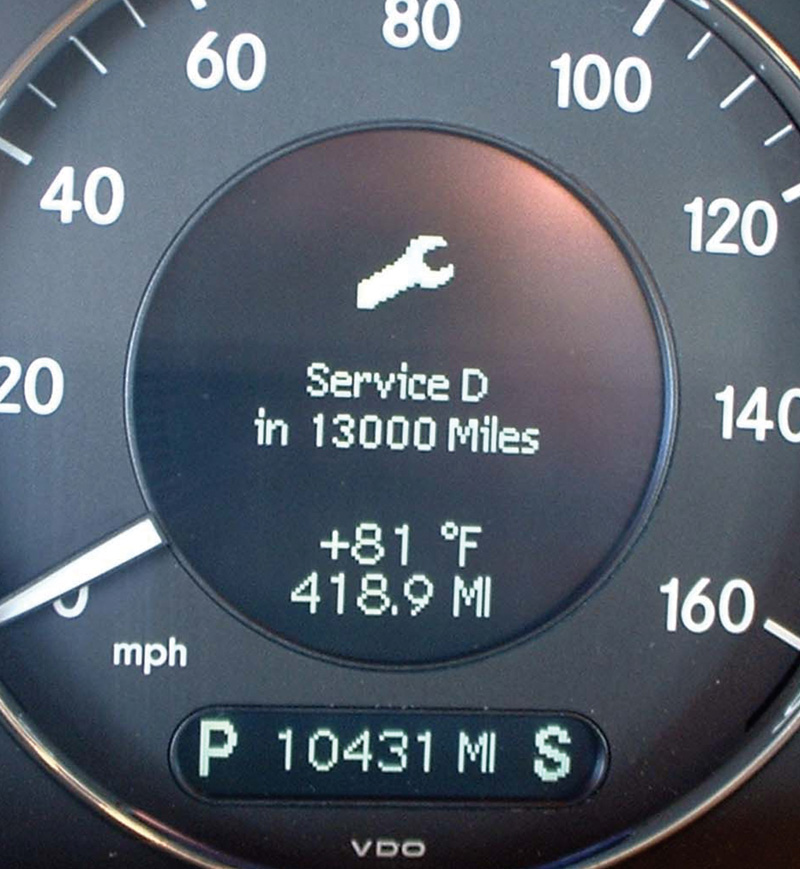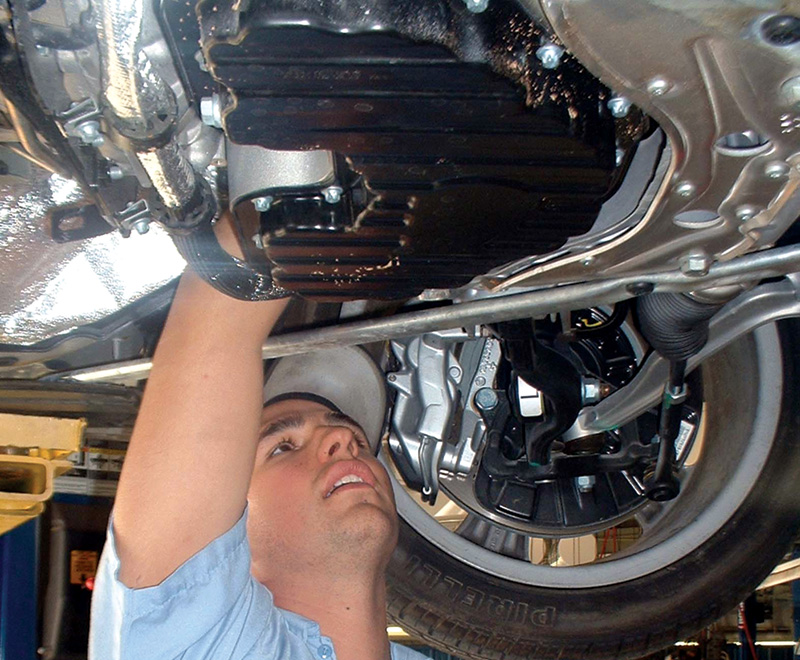Extended service intervals? How about an average of approximately12K between oil changes? What’s it all mean for our business?

Depending on how the car is driven, it might be a long, long time before the FSS lets that motorist know it’s time for service. That’s a convenience for the Mercedes-Benz owner, but may present a business challenge to the independent M-B service shop.
Over five years ago, Mercedes-Benz introduced its Flexible Service System, a computerized maintenance reminder that takes numerous factors into account before alerting the driver to the need for an oil and filter change. Although the idea had been tried before with varying degrees of success, from all reports this is actually working as intended. Back in ’99, it became standard equipment on E320, E430, C280, C43, CLK320, CLK430, SL500, and ML320/430 models powered by the 3.2L V6 and 4.3L and 5.0L V8.
The key to FSS is a dielectric sensor in the oil pan that sends the computer information on the amount and type of contaminants in the liquid lubricant. It does this by calculating the dielectric constant of the oil – its ability to insulate – by measuring the electrical capacitance of the oil. Contaminants cause a gradual shift in the dielectric constant. The logic also takes into account input on rpm, throttle position, vacuum, and oil and coolant temperatures.
There’s also an integrated oil level sensor, which not only reports if the crankcase is either low or overfilled, but also lets the FSS module know when and how much oil you’ve added. This information goes into the service calculation (also known as the Bonus System), extending the change interval because now some of the oil is fresh.
The result of all this computing is an instrument panel readout that gives the motorist plenty of time to work an LOF appointment into his or her crammed schedule. In fact, the main justification for FSS is customer convenience — he or she won’t have to make as many service visits.
How long to spoil the oil?
This has been an interesting development, not just because of those sensors and unique programming, but also because the oil-change intervals the system gives you are from — get this — 10,000 to a maximum of 20,000 miles, depending on usage (time limitations also apply).

This sophisticated dielectric sensor resides in the oil pan and actually has the ability to report on the types and amounts of contaminants in the engine oil. This input goes into the electronic hopper with other info so that the computer can calculate the optimum oil/filter change interval.
Why do the Stuttgart engineers believe you should subject your beloved and expensive conveyance to what we veteran technicians would call dangerous oil change intervals? Lots of reasons. To begin with, that crazy-sounding 20K-mile maximum is only in cases where the FSS sees nothing but open-road cruising at light throttle and moderate temperatures. There are also the evolutionary improvements in oils (229.3 or 229.5 specs synthetic oil required) and filters that benefit all automobiles, as does a precisely-controlled air/fuel mixture that won’t wash lube off the cylinder walls or contaminate the crankcase with raw gas.
For its own products, M-B cites sophisticated engine design carried out using the best available materials. This includes such things as cast-in silicon-aluminum cylinder sleeves with a low-friction surface that allows piston ring spring tension to be reduced by 50%. Combined with other friction-reducing measures, overall internal parasitic losses are down an impressive 45%, and that means less stress on the oil.
Another factor is the super-accurate electronic engine management system, starting with the Robert Bosch Motronic ME 2.0 and its successors, which allows these engines to meet National Low Emissions Vehicle (NLEV) standards. This leaves little chance for an overly-rich mix to ever occur, or its attendant gasoline dilution of the critical lubricant. Of course, it doesn’t hurt that the oil capacity of current M-B models ranges from eight to a truly-abundant 13 quarts.
Do the math
Suppose for the sake of argument that all cars you work on have similar features and the same recommended oil change intervals within 10 years. Combined with 100,000-mile spark plug, coolant, and belt life, will our business be decimated?
In a word, no. Or, at least not for a long time. The U.S. vehicle population is tremendous. Even given the growth in sales for Mercedes-Benz models, those already on our roads aren’t going to be replaced all that soon. In our own shop, we’ve recently worked on an older SL with almost a quarter of a million miles on it, and several diesels that have gone even farther, yet are still in great shape.
Also, people are keeping their cars just about forever — roughly 10 years is the average age of cars and light trucks in the national fleet today, but it’s much longer with Mercedes-Benz models, and going nowhere but up. It’s just so costly to buy a new vehicle that motorists are hanging on to existing cars until they get every last bit of use out of them. They’re also driving more and more miles per year, taking better care of their cars than they did in the neglectorama past, and more willing to have expensive repairs done instead of dumping their dependable old friends.

Traditionally, service shop technicians have used oil and filter changes as an opportunity to give the car a careful examination and perhaps uncover the need for repairs, or other maintenance. Now, with the longer LOF intervals the Flexible Service System permits, you’ll have to make the most of each visit by being extra vigilant and disciplined in your inspection.
Another positive factor for your service business is that sooner or later all these aging Mercedes-Benz vehicles will need repairs, advanced technology and terrific durability notwithstanding. Brakes are a good example. For many reasons, they need more work today than they did in the past. Eventually, every Mercedes will need a water pump, too. Then there are all the other components that high mileage will eventually wear down or otherwise destroy: CV boots and joints, clutches, suspension and steering parts, exhaust systems, radiators, hoses, and belts, batteries, starters, and alternators, A/C compressors, condensers, and evaporators, internal engine parts, etc.
Not only is most of this work more labor-intensive than it was in the old days, but the parts are vastly more expensive, meaning your profit on parts will be higher. So, even as the number of jobs your customers require is going down, the size of the ticket is going up.
All of this is not to say that the automotive service business will not decline. It will. Face it: All cars, and especially M-B models, are simply getting better and better. But you’ve got at least another decade of prosperous dollar volume ahead of you, maybe 15 good years. Beyond that, all bets are off. Never listen to people who want to tell you what’s going to happen 20 years into the future.






0 Comments